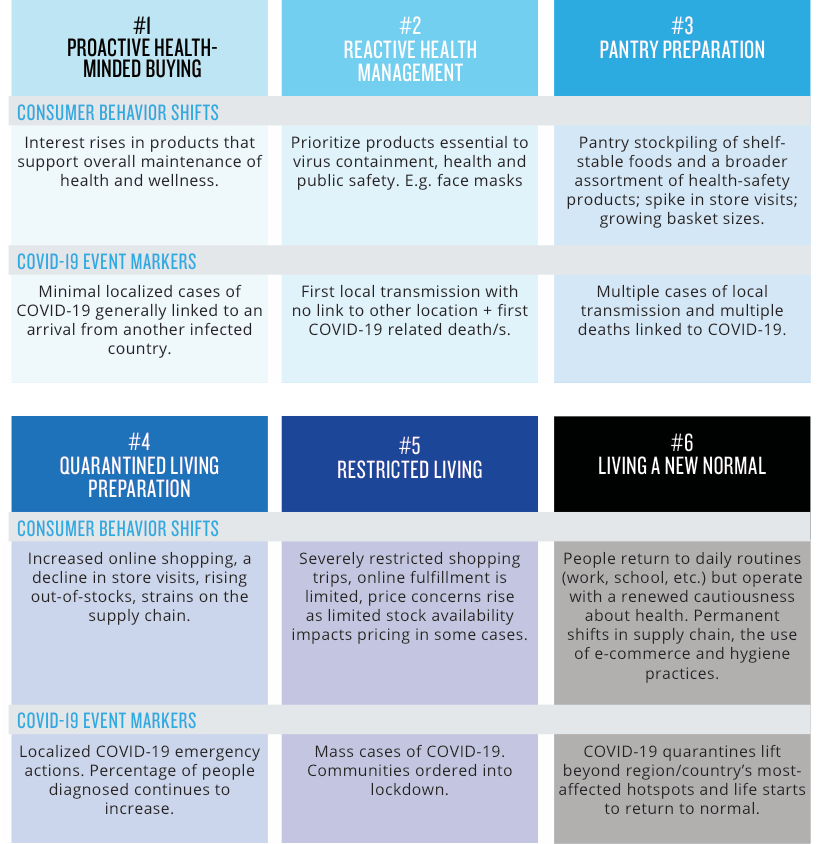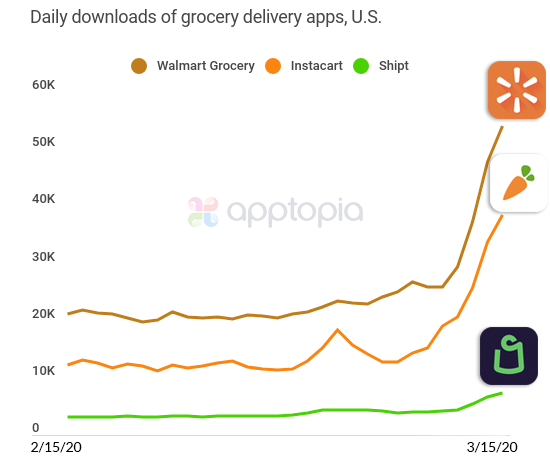Covid-19 Impact On eCommerce
Hopefully, in 20 years the ones who’re gonna find this article, would not have any clue what it’s about. But for now, the situation is as such: due to Coronavirus’s rapid spread all over the globe, the economy experiences a drastic paradigm shift. The novel virus made countries react quickly and put them in quarantine. Learning how to be efficient while working from home became a necessity for businesses to survive.
The current state of Ecommerce
Brands and retailers are worrying about how Covid-19 is gonna affect eCommerce. And it’s understandable, that it’s hard to have a clear vision through the panic and chaos.
Loads of companies are canceling their social events, like conferences or any other live meetings. But isn’t it a chance to later analyze how effective those events are? Are in-person professional gatherings really worth the time and money investment? Or does it make sense to switch to the virtual world?
It seems first, that many sellers would come out winners out of coronavirus outburst, as people are forced to stay at home and buy online. But the ambiguity of the situation is backed up with the fact that factories in China, the location of a major part of manufacturing, are just starting to get back to work. A shortage of workers on a supply chain and warehouses makes the situation even worse.
44% of retailers expect product delays due to the coronavirus, and 40% expect inventory shortages, according to the Digital Commerce 360 survey.
The situation is not fully clear. Will eCommerce experience inflow? How does product content delivery automation help them to thrive online? Let’s analyze the related factors.
How the home regime during coronavirus pandemic shifts buying habits
As more people are afraid to get infected, the answer to whether they follow the quarantine regime in the majority of cases would be YES. Meanwhile, this social distancing creates new tendencies in shopping. This is an absolutely unexpected situation. And I doubt many brands have been prepared properly.
So what are these tendencies?
In an effort to avoid public gatherings, customers go online shopping. Such seemingly commonplace stuff like toilet paper, soap, and other household supplies became a #1 target. Each day brands are sending messages with promotions, discounts, free deliveries, anything to make a business stay afloat or even hype on the global crisis.
What’s interesting, even elderly people started switching to online shopping. It is particularly true for the food industry. Businesses providing delivery services are on top during quarantine for obvious reasons.
Nielsen identifies 6 main consumer purchasing behaviors and Covid-19 events that lead to them.

How eCommerce reacts to a new regime caused by a coronavirus
Though it seems eCommerce is untouchable, we can now clearly see certain threats. Supply chains are failing, resulting in delayed deliveries. Items are quickly running out of stock because of the heightened demand. Entrepreneurs selling on Amazon, for instance, need to stay cautious — a big A has a special punishment for the ones who haven’t got the listed item in stock for more than 30 days (falling down in organic search and advertising algorithms).
What do brands and retailers do to stay afloat during a coronavirus outbreak?
Companies like Walmart are shortening their working hours to win time for a restock.
Amazon hires 100,000 employees to handle the demand on online sales, while Walmart aims for 150,000, both giving money bonuses on top.
To successfully manage delivery logistics, companies are hiring more drivers and remote workers. Not a surprise, that demand for warehouse workers and delivery truck drivers has grown the fastest over the past week, according to Glassdoor hiring data.
Which business areas will see a demand increase during coronavirus
Who sees a coronavirus as a unique business opportunity?
Grocery stores are experiencing buying patterns shift. Before, only 4% of Americans were shopping online, according to Nielsen. Now, during the coronavirus outbreak average daily downloads of grocery apps increased by 218%, 160%, and 124% (Instacart, Walmart, and Shipt).

The situation with food delivery apps tends to go downwards. Though companies are ensuring to have non-contact policies, people start to realize it is both expensive and still not that safe as cooking meals at home.
 Health & safety products rightfully became the most wanted on the market. Medical supply, rubbing alcohol, bath & shower wipes, first aid kits demand has grown for +85.3%, +65.5%, +59.6%, and +52.3% accordingly (U.S. sales % growth vs. year ago).
Health & safety products rightfully became the most wanted on the market. Medical supply, rubbing alcohol, bath & shower wipes, first aid kits demand has grown for +85.3%, +65.5%, +59.6%, and +52.3% accordingly (U.S. sales % growth vs. year ago).
Pharmaceuticals like cold & flu remedies, cough meds and antibiotics sales got +18.1%, +16.9%, and +15.4% respectively.
Internet and telecommunication companies are at their best. While businesses are stuck working from home, a need for a high-speed safe connection increases. Companies are desperate to find a smoothly working medium for corporate communication. Slack, Zoom, Skype, Google Hangouts, Mattermost, Microsoft Teams are putting more effort into ads and services upgrades. Google and Microsoft are even developing enhanced teleconferencing tools for free to support a “work from home” mode. The whole world now depends on them. So this is how modern-day heroes look like, huh?
How the coronavirus may affect your eCommerce store
#1 Delay in Shipments
Setting a good delivery infrastructure may be not that easy for small or mid-sized retailers, as their resources are usually limited. The world just stopped operating at that fast and furious pace.
#2 Lack of Supplies
While the situation in China with quarantine slowly gets better and the factories might start renewing operations, it is still unclear how fast they will start working on a regular level.
How to prepare your online store to operate under coronavirus pandemic
#1 Follow the news and latest reports. The coronavirus eCommerce data updates pop up fast and you should react.
#2 Be in constant contact with your suppliers. Factories reopened? The quarantine period is to extend? Workers are still not able to work or are they gradually stepping into production, but under a new adapted schedule?
#3 Stay in touch with the clientele. Remember to inform your customers of every update and possible delays.
#4 Look for backup options. Maybe it is more efficient to switch to the local supplier?
#5 Be careful with paid ads. Now that you have uncertainty about supply, would be unreasonable to promote items you might have trouble receiving on schedule.
#6 Automate product content distribution to have all data delivered in time and in the right format to every sales channel. This would help your search engine rates, as well as not be banned from a marketplace and keep customers updated with relevant information.
What are the predictions for eCommerce for an after-pandemic period
Ecommerce would need time for recuperation. Smaller companies would take a hit, while big monopolies would stay afloat and dominate the market.
As we are all habitual animals, it is easy to conclude that the patterns we’re accumulating now could remain even after a coronavirus pandemic. A tendency to buy online is about to stay in buyers’ psyche. People are gonna be itching to buy online as the pandemic slows down. As nobody would be doing massive shopping during the virus, the needs would probably accumulate by the end of the Covid-19.
Now, as lots of us rely on online shopping, brands and retailers face a test of coping with increased demand, starting from managing the supply of raw materials and manufacturing to delivering ready goods and regularly distributing/updating product content on a number of marketplaces. In times of crisis, it is important to know how to use automation tools. The faster you operate — the more facial masks you sell 🙂 And, toilet paper, of course.






